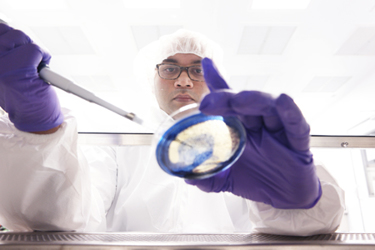Bridging The Ligand Binding Assays And LC-MS Disciplines For Hybrid Assays
By Barry Jones, Ph.D., Director, LC-MS Biologics, and Adriane Spytko, Associate Director, LC-MS Biologics

Assessing the pharmacokinetics of biologics presents several analytical challenges, from the use of critical reagents and assay sensitivity requirements to regulatory and throughput considerations. In this insight brief, we’ll look at all of those and more in the context of combining immunoassays and LC-MS assays into a hybrid platform. The future possibilities that new frontiers in quantitative analysis of biologics may bring are also discussed.
Immunoassay performance is entirely dependent on critical reagents because it requires a capture and a detection reagent. Those critical reagents can also affect IA/LC-MS methods, but typically not to the same degree. Whereas both assay formats involve a capture step, IA/ LC-MS methods aren’t dependent on the downstream binding of the analyte to the detection antibody. The IA/LC-MS method is specific for that signature peptide derived from the digested analyte, and less reliant on a capture antibody binding to a specific protein epitope.
There are also other robustness aspects for IA/LC-MS methods that can improve quantitation, such as the use of a stable isotopically labeled protein level internal standard to normalize variability in the whole analysis process.
Get unlimited access to:
Enter your credentials below to log in. Not yet a member of Clinical Leader? Subscribe today.
